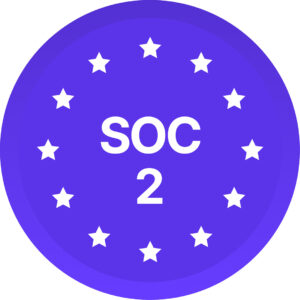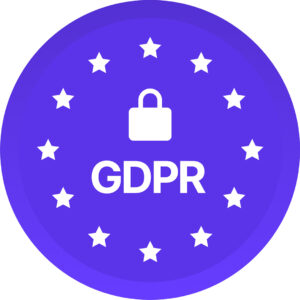Coming out can be a hard and extremely slow process, especially in a professional setting. I remember at one of my first office jobs; it took me around two years to come out in the workplace. (Yes, it was and is a privilege that I could come out eventually, but it was a scary and emotionally taxing navigation nonetheless).
Coming out was difficult for me, not because of the staff – they were some of the loveliest individuals I had ever met. Instead, it was because many small moments made it uncomfortable for me to come out, and a part of me wanted that comfort and ease of staying closeted in my professional image.
Brief comments made by colleagues, like ‘I don’t know what all the letters mean in that ridiculously long acronym’ or asking about my relationship status and “dating bio”, to see if I would be a good fit for their sons, nephews, cousins, etc. made it harder for me to come out at work. I also noticed that my colleagues would not participate in queer-led initiatives at work and were unaware of organization-wide promotions of such events. All these small fumbles, assumptions, and disengagements with 2SLGBTQI+ initiatives built up, making me more hesitant to take that first step in coming out.
My story contains just a few examples of uncomfortable scenarios that can occur in the workplace. There are many other positive and negative coming-out experiences that have coloured my life and the lives of other 2SLGBTQI+ members. These experiences combine to create our realities in the coming out process and significantly affect people’s decisions to come out at work.
Few things to keep in mind when striving to be supportive of your 2SLGBTQI+ colleagues:
-
Do not assume you know everyone’s dimensions of diversity.
We should always strive to be respectful, but it is also important to remember that we are only human and can make mistakes. When it comes to someone’s gender and sexuality, remember that many dimensions of diversity are invisible.
This means that we should not make assumptions about an individual’s gender, sexuality, or assumed partners. When engaging in personal discussions with colleagues, we must be mindful and respectful in our commentary, as some topics may be triggering or have a more significant impact on some people than others. Being mindful of these ever-evolving dimensions is an essential tool for office allies.
- Be diligent in asking and using personal pronouns.
As humans, we constantly evolve – this may also be true for how we choose to identify. Do not be afraid to ask someone their pronouns – and ask everyone! But also keep in mind that these things can change. Pronouns can be updated. New partners may have different pronouns. And policies like dress codes may affect people differently, depending on where they are in their journey.
-
Do not rely on the 2SLGBTQI+ community to educate you – do your research.
It is not the job nor the responsibility of your coworkers to educate you on inclusion, diversity, equity, or accessibility (IDEA) IDEA topics. And that includes queer folks! If you are unsure of the meanings of the letters in the acronym 2SLGBTQI+, or how to ask for a person’s pronouns, the difference between gender terms and sex terms etc., it is up to you to do the work.
Take a class. Read a few articles. Attend an event featuring 2SLGBTQI+ members. There is no shortage of resources available to support your knowledge and development. Knowledge is power, and a significant step in allyship is removing the burden of teaching others the language and boundaries of appropriateness for the 2SLGBTQI+ community, especially for those that are still in the early stages of the coming out process and may not have all the answers.
-
Instill and clarify your safe space values.
Everyone deserves to come to work authentically and to feel safe while doing so. Being a builder of safe spaces is a powerful thing. Utilizing inclusive language, sharing your pronouns, clarifying your boundaries on sharing personal information, and not pressuring others to share details they may not feel comfortable disclosing – are all components of acting in allyship and creating safe spaces. And this does not only apply to members of the 2SLGBTQI+ community but to individuals who may be experiencing changes in their life. Being a genuinely safe, respectful person gives others a person to reach out to and reminds them that they aren’t alone. -
Promote inclusive language and 2SLSGBTQI+ initiatives.
Ensuring your organization includes equity-deserving groups in inclusive initiatives is vital to any IDEA journey. But these equity-deserving groups, including those who identify as 2SLGBTQI+, should not always be the ones who are responsible for getting the ball rolling.
Developing pathways of access for these groups, so they don’t constantly have to ask for accommodations or pathways to navigate barriers is enormous. It could be as simple as having a Pride flag on your office door to notify anyone coming into your office that you, and your organization, are committed to the inclusion and safety of 2SLGBTQI+ individuals.
What’s more – integrating inclusive practices and policies such as gender-accessible restrooms and dress codes, or tip sheets on how non-binary folks may navigate the benefits programs or parental leave at your company, or discussing whether your team should implement pronouns on your email signatures – these are all very practical and tangible ways to create an inclusive space.
Conclusion
The crux of this is helping build an accessible and safe space to welcome your 2SLGBTQI+ colleagues to show up authentically at work. A safe environment is essential in supporting the coming out process of your colleagues and should always be your first step. Coming out is a scary, labour-intensive experience for many people. Reducing the emotional labour that they may have in the workplace by creating a knowledgeable and safe space is the basis of supporting your 2SLGBTQI+ colleagues on their journey.
This blog by MacKenzie Pudwell was originally published by Diversio EDU (formerly CCDI Consulting) in December 2022.
Our newsletter and blogs feature personal opinions and diverse viewpoints. We aim to create a safe space for our team to share their perspectives on diversity and inclusion. Please note that individual articles may not align with every reader’s view or comprehensively cover a topic. We appreciate the diversity of opinions and respect our team’s contributions.

